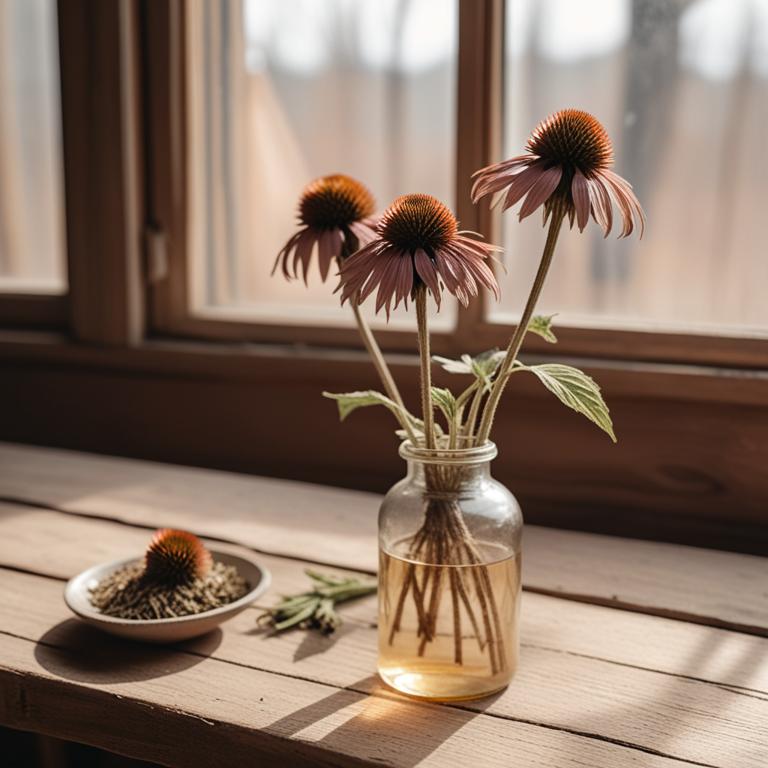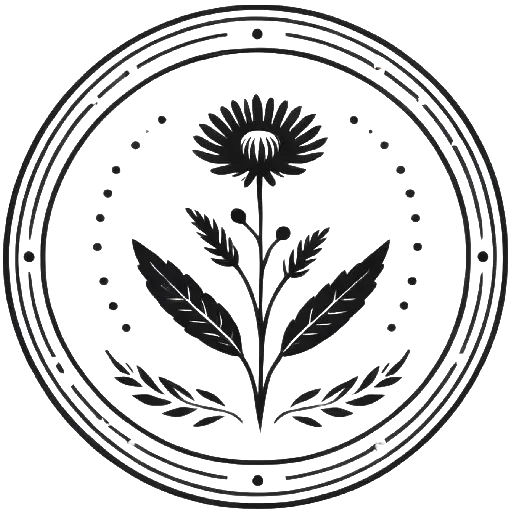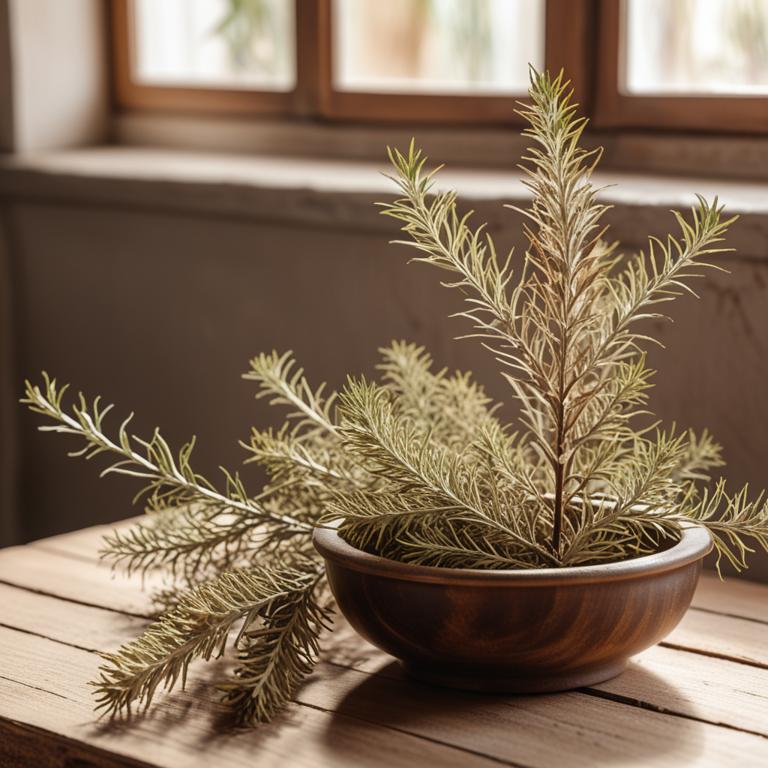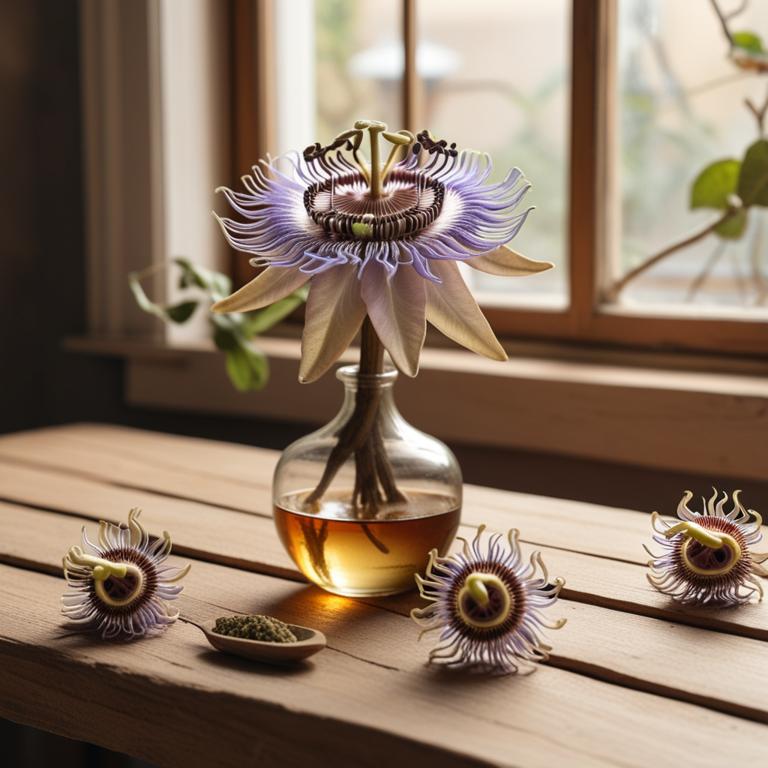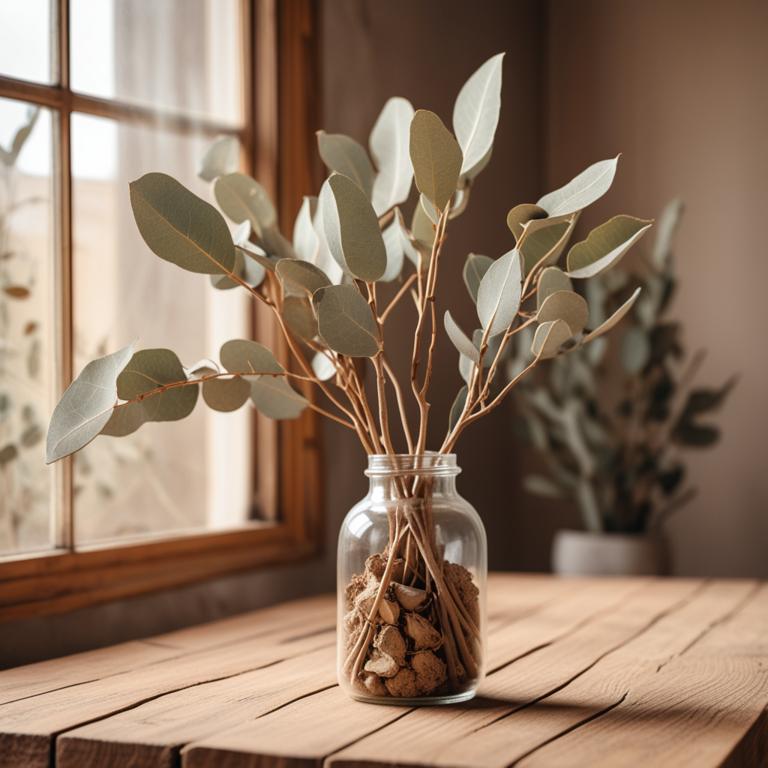Updated: Nov 30, 2024
11 Herbal Tinctures For Colds
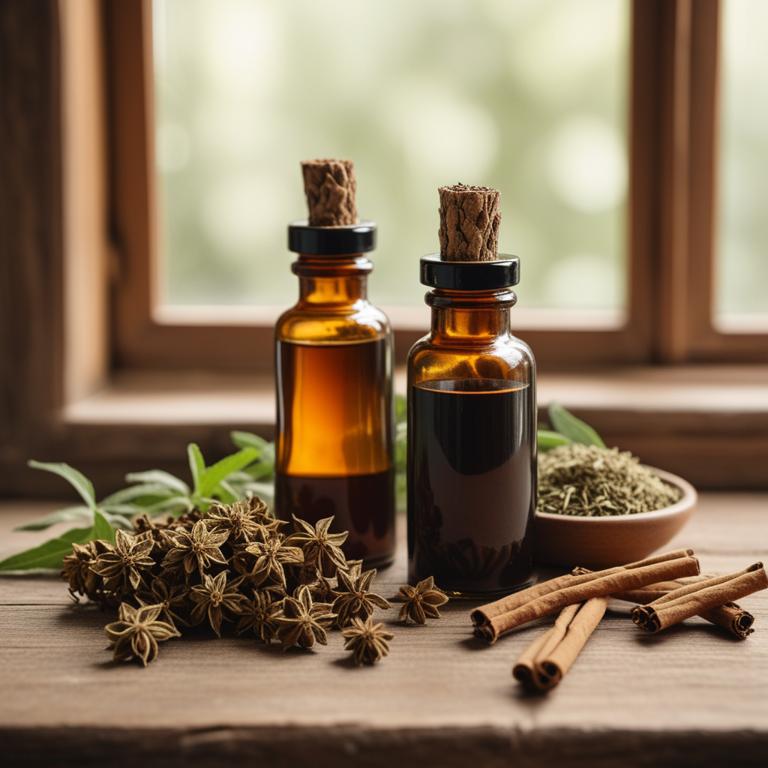
Herbal tinctures can be a great way to help alleviate cold symptoms.
These liquid extracts are made from plants that have been used for centuries to boost the immune system and ease congestion. One of the reasons herbal teas and tinctures are so effective is because they contain compounds that can help fight off infections and reduce inflammation. For example, Echinacea purpurea, also known as coneflower, is often used to support the immune system and prevent illness.
It's rich in antioxidants and has been shown to have anti-inflammatory properties, which can help reduce the severity of cold symptoms. On the other hand, Eucalyptus globulus, or eucalyptus, is a natural decongestant that can help clear out mucus and make it easier to breathe. Another great option is Zingiber officinale, or ginger, which has anti-inflammatory properties that can help soothe a sore throat and reduce congestion. Ginger also has natural expectorant properties, which can help bring up mucus and make it easier to clear out.
Drinking herbal teas or taking tinctures made with these herbs can bring a number of benefits, including reduced symptoms, faster recovery, and a boost to the immune system.
This article explains in detail what are the best herbal teas for colds and wh.
Also, you may be interested in...
Today Free Bonus!
The Ultimate Herb Drying Checklist
(For Long-Lasting Powerful Medicinal Effect)
How to easily dry herbs that don't mold and that keep their strong medicinal power for more than 1 year.
Table of Contents
1. Echinacea purpurea
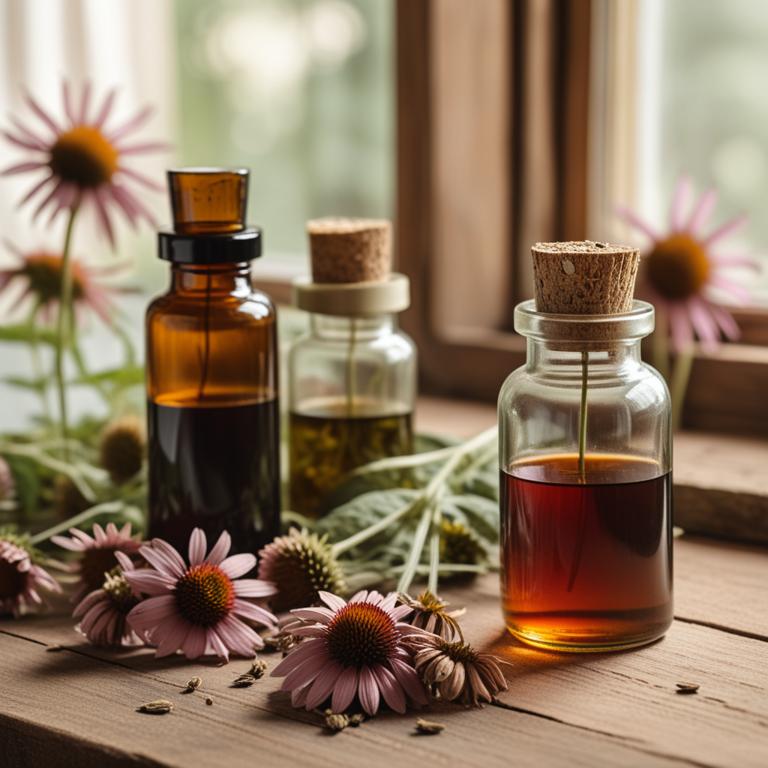
Echinacea purpurea tinctures contains active constituents like alkylamides, glycosides, and phenolic acids.
These compounds have anti-inflammatory properties, which help to reduce swelling in the throat and ease congestion caused by colds. The tincture's flavonoids, such as kaempferol and quercetin, have antioxidant properties that combat oxidative stress and promote immune function. The sesquiterpene lactones present in Echinacea purpurea tinctures stimulate the immune system and increase the production of white blood cells, helping the body fight off the infection.
By reducing inflammation and boosting the immune system, Echinacea purpurea tinctures can provide relief from the symptoms of a cold.
- Gather 1 cup of dried Echinacea purpurea roots and flowers, 2 cups of 80% vodka, and a clean glass jar.
- Combine the dried Echinacea purpurea in the glass jar.
- Pour the vodka over the Echinacea purpurea, making sure everything is covered.
- Seal the jar and store it in a cool, dark place for 2-3 weeks, shaking it every day.
- Strain the liquid through a cheesecloth or a coffee filter into another clean glass jar, discarding the solids. Use 20-30 drops of the tincture in water or tea to help with cold symptoms.
2. Eucalyptus globulus
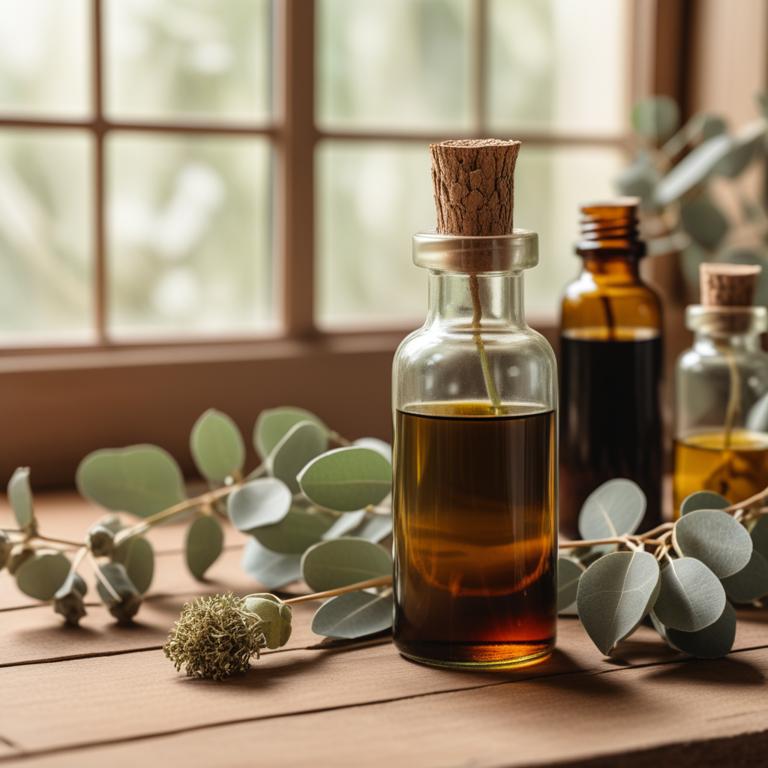
Eucalyptus globulus tinctures contains compounds like eucalyptol, borneol, and camphor, which are known to have decongestant and expectorant properties.
These properties help to relieve congestion and make it easier to cough up mucus, which is often a problem when you have a cold. Eucalyptol, in particular, is a natural anti-inflammatory that can help to reduce swelling in the nasal passages and sinuses. The expectorant properties of these compounds also help to loosen and clear out mucus, making it easier to breathe and feel better.
By loosening and clearing out mucus, eucalyptus globulus tinctures can help to alleviate symptoms of a cold, such as congestion and coughing.
- Gather 1 cup of fresh Eucalyptus globulus leaves and 2 cups of 80% vodka in a clean glass jar.
- Pack the Eucalyptus leaves tightly into the jar, making sure they're fully covered by the vodka.
- Seal the jar and let it sit in a cool, dark place for 2-3 weeks, shaking the jar every day.
- Strain the liquid through a cheesecloth or a coffee filter into another clean glass jar, discarding the solids.
- Store the tincture in a cool, dark place and take 20-30 drops, 3-4 times a day, when needed to relieve cold symptoms.
3. Zingiber officinale

Zingiber officinale tinctures contains active constituents like gingerols and shogaols, which are responsible for its therapeutic properties.
These compounds have anti-inflammatory and expectorant properties, helping to relieve congestion and soothe a sore throat. Gingerols also have antioxidant properties, which help to combat free radicals that can exacerbate cold symptoms. Shogaols, on the other hand, have analgesic and antipyretic properties, making them effective in reducing fever and pain associated with colds.
By reducing inflammation and relieving discomfort, Zingiber officinale tinctures can provide relief from cold symptoms and promote a faster recovery.
- Gather 1 cup of fresh Zingiber officinale (ginger) roots and 2 cups of 80% ethanol (vodka works too).
- Chop the ginger roots into small pieces and put them in a clean glass jar.
- Pour the ethanol over the ginger, making sure all the roots are covered.
- Steep the mixture in a cool, dark place for 2-3 weeks, shaking the jar every day.
- Strain the mixture and discard the ginger. Transfer the liquid to a glass bottle and store it in a cool, dark place.
4. Glycyrrhiza glabra
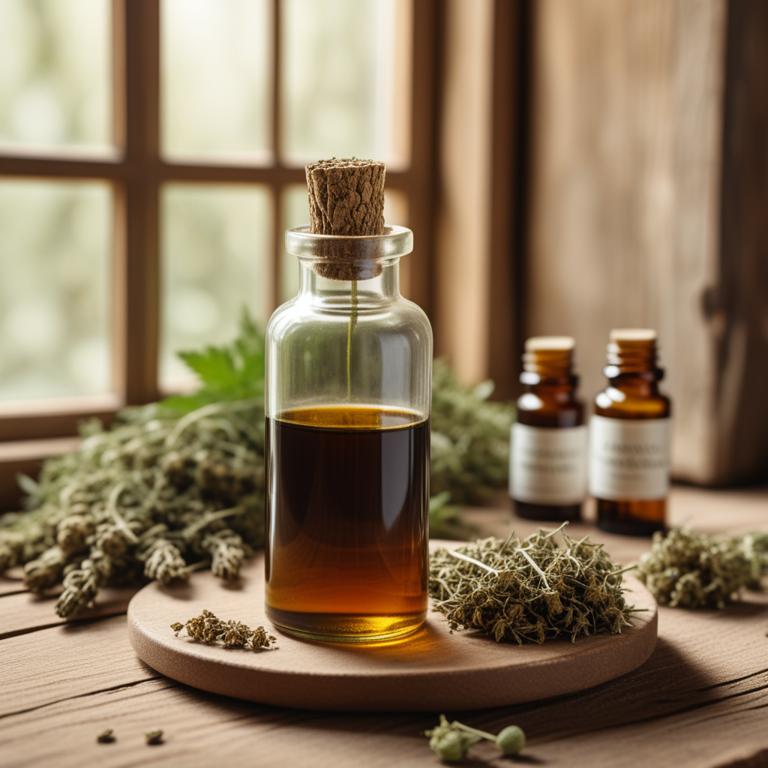
Glycyrrhiza glabra tinctures contains the bioactive constituents glycyrrhizin and flavonoids.
These compounds have anti-inflammatory and expectorant properties, which help to reduce congestion and loosen mucus in the respiratory tract. Glycyrrhizin also has antiviral properties, which can help to combat the underlying cause of a cold. The expectorant properties of glycyrrhiza glabra tinctures help to thin and clear out mucus, making it easier to cough up and breathe.
By reducing inflammation and loosening mucus, glycyrrhiza glabra tinctures can help to alleviate symptoms of a cold, such as a sore throat and cough.
- Gather 1 cup of dried Glycyrrhiza glabra roots and 2 cups of 80% vodka in a clean glass jar.
- Add the dried roots to the jar and fill the jar with vodka, making sure the roots are completely covered.
- Seal the jar tightly and store it in a cool, dark place for 2-3 weeks, shaking the jar every day.
- After 2-3 weeks, strain the liquid through a cheesecloth or a coffee filter into another clean glass jar, discarding the solids.
- Store the tincture in a cool, dark place and use 20-30 drops in water or tea as needed to relieve cold symptoms.
5. Echinacea angustifolia
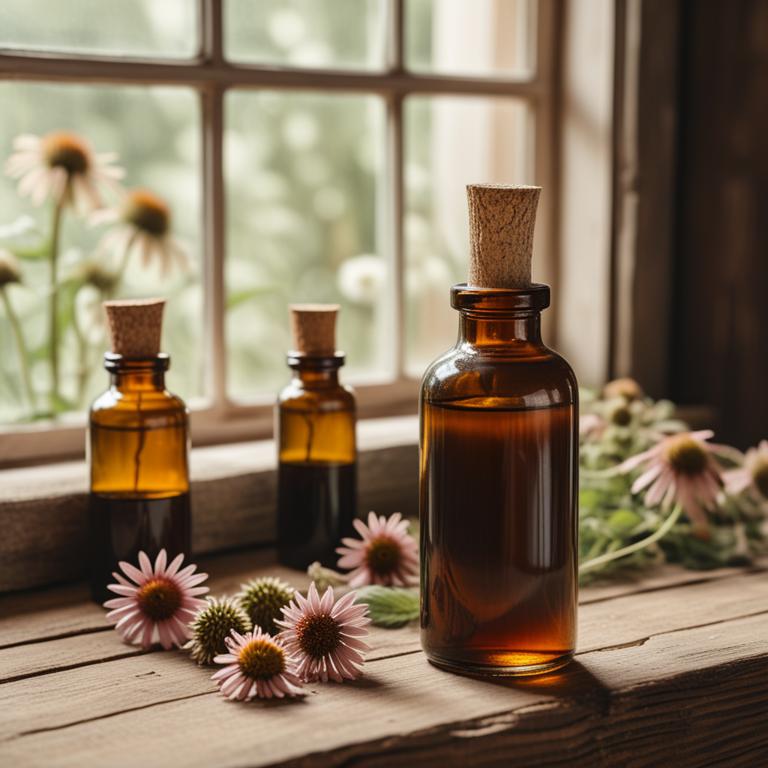
Echinacea angustifolia tinctures contains active constituents like alkylamides, glycosides, and phenolic acids.
These compounds have anti-inflammatory and immune-boosting properties, which can help combat the underlying causes of a cold. The alkylamides in Echinacea angustifolia have been shown to stimulate the production of white blood cells, increasing the body's ability to fight off infection. The glycosides and phenolic acids in the tincture have antioxidant and antimicrobial properties, which can help reduce the severity and duration of a cold.
By supporting the immune system and reducing inflammation, Echinacea angustifolia tinctures can help alleviate cold symptoms and promote recovery.
- Gather 1 cup of Echinacea angustifolia roots and stems. Dry them in a low-heat oven (150°F) for 2 hours.
- Grind the dried Echinacea into a fine powder using a coffee grinder or mortar and pestle.
- Combine 1 cup of the Echinacea powder with 2 cups of vodka in a clean glass jar. Stir well.
- Seal the jar and store it in a cool, dark place for 2 weeks, shaking the jar every day.
- Strain the tincture through a cheesecloth or coffee filter into another clean glass jar. Discard the solids and store the tincture in a cool, dark place.
6. Sambucus nigra
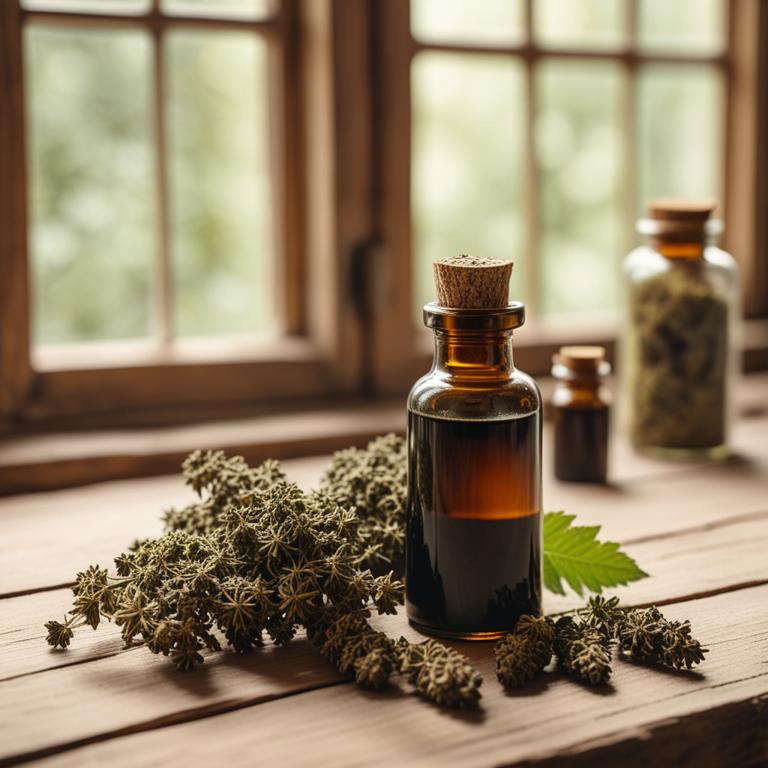
Sambucus nigra tinctures contains bioactive constituents like flavonoids, phenolic acids, and oligosaccharides.
These compounds have antiviral and anti-inflammatory properties that help combat cold viruses and reduce congestion. The flavonoids in Sambucus nigra, such as vitexin and isovitexin, have been shown to inhibit the replication of viruses, including those that cause the common cold. The phenolic acids, including ferulic and caffeic acids, have antimicrobial properties that help prevent the spread of infections.
By reducing inflammation and inhibiting viral replication, Sambucus nigra tinctures can help alleviate symptoms of the common cold.
- Gather 1 cup of fresh Sambucus nigra flowers and leaves.
- Combine the flowers and leaves in a clean glass jar.
- Add 2 cups of vodka (at least 80 proof) to the jar.
- Seal the jar and let it sit in a cool, dark place for 2-3 weeks, shaking the jar every day.
- After 2-3 weeks, strain the liquid through a cheesecloth or a coffee filter into a clean glass bottle. Store in a cool, dark place.
7. Ginkgo biloba
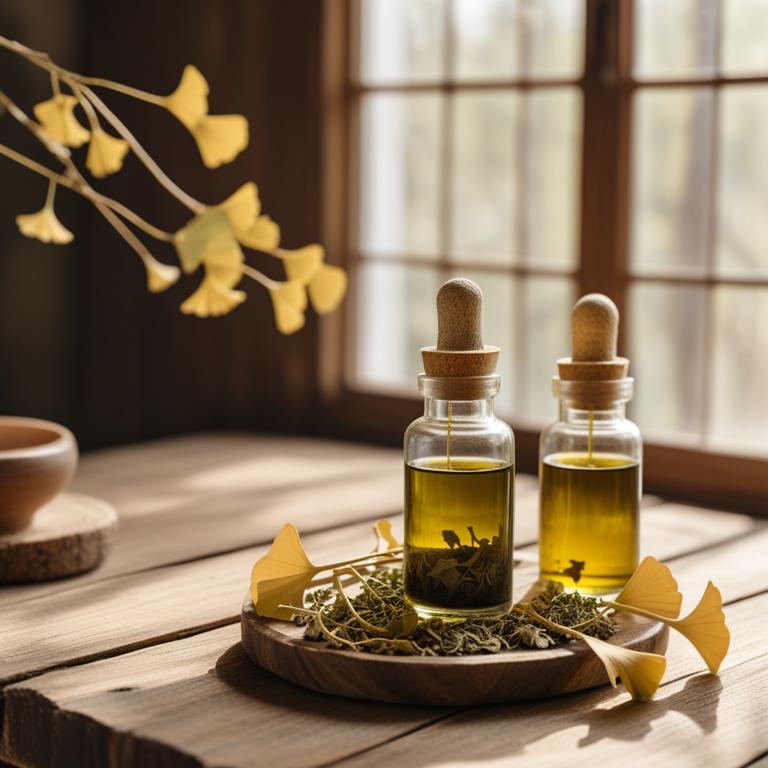
Ginkgo biloba tinctures contains flavonoids, bilobalide, and ginkgolides as its bioactive constituents.
These compounds have anti-inflammatory properties, which help to reduce swelling in the nasal passages and sinuses, making it easier to breathe. The flavonoids also have antioxidant properties, which help to protect the body from oxidative stress caused by cold viruses. The ginkgolides, in particular, have been shown to inhibit the release of pro-inflammatory chemicals, which contribute to the symptoms of a cold.
By reducing inflammation and protecting the body from oxidative stress, Ginkgo biloba tinctures can help to alleviate the symptoms of a cold.
- Gather 2 cups of fresh or dried Ginkgo biloba leaves, 1 cup of 80-proof vodka, and a clean glass jar with a lid.
- Combine the Ginkgo biloba leaves and vodka in the glass jar. Make sure the leaves are completely covered by the vodka.
- Seal the jar with the lid and store it in a dark place. Let it sit for 2 weeks, shaking the jar every day.
- After 2 weeks, strain the mixture through a cheesecloth or a coffee filter into another clean glass jar. Discard the solids.
- Transfer the Ginkgo biloba tincture to a small bottle and store it in a cool, dark place. Use 20-30 drops of the tincture in water or tea up to 3 times a day to relieve cold symptoms.
8. Astragalus membranaceus
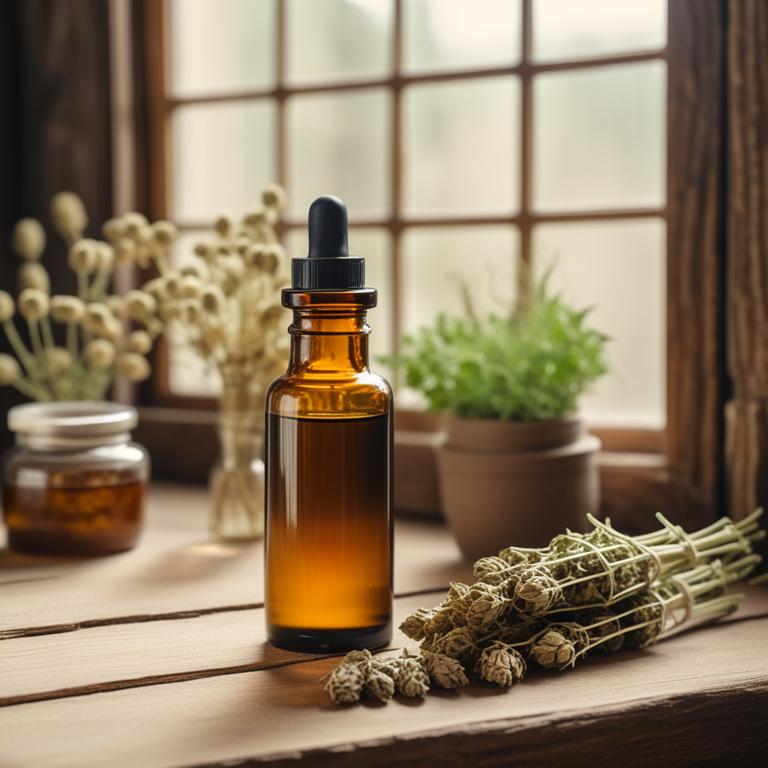
Astragalus membranaceus tinctures contains bioactive constituents like polysaccharides, saponins, and flavonoids.
These compounds have anti-inflammatory and immunomodulatory properties, which can help to reduce the severity of cold symptoms. The flavonoids in Astragalus membranaceus tinctures have antioxidant effects, which can protect the body from oxidative stress caused by viral infections. The saponins in the tincture have antiviral properties, which can help to inhibit the replication of viruses that cause colds.
By reducing inflammation and protecting against oxidative stress, Astragalus membranaceus tinctures can help to alleviate cold symptoms and support the body's natural healing process.
- Gather 1 cup of dried Astragalus membranaceus roots and 2 cups of vodka in a clean glass jar.
- Add the dried roots to the jar and fill with vodka, making sure the roots are covered.
- Seal the jar and let it sit in a cool, dark place for 2-3 weeks, shaking the jar daily.
- After 2-3 weeks, strain the mixture through a cheesecloth or a coffee filter into another clean glass jar.
- Discard the solids and transfer the tincture to small glass bottles with dropper lids. Store in a cool, dark place.
9. Echinacea pallida
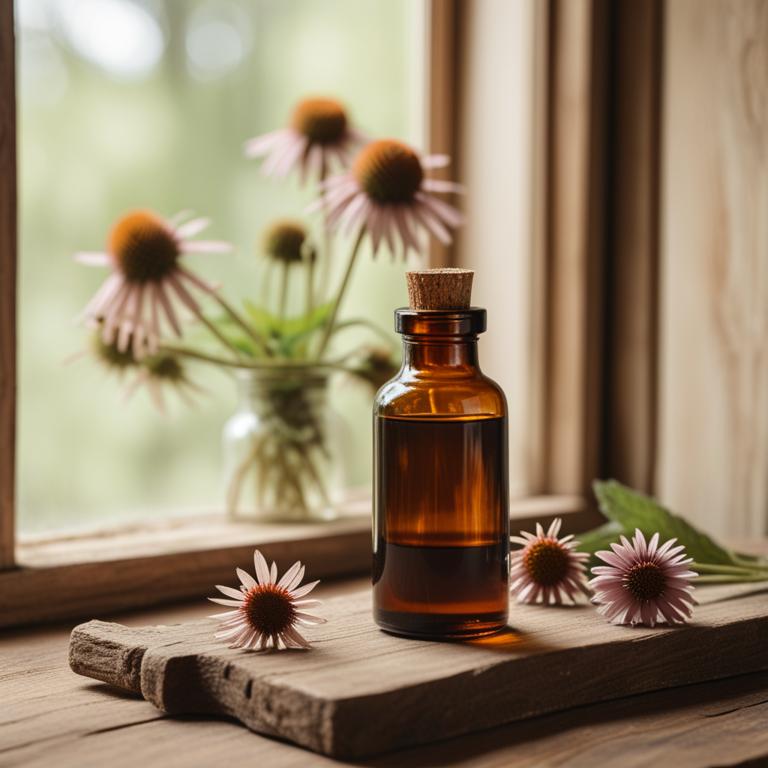
Echinacea pallida tinctures contains alkylamides, glycosides, and phenolic acids as its main bioactive constituents.
These compounds work together to boost the immune system, helping the body fight off invading pathogens that cause colds and flu. The alkylamides have anti-inflammatory properties, which can reduce swelling and ease congestion in the nasal passages. The glycosides in Echinacea pallida tinctures have been shown to stimulate the production of white blood cells, which are vital for fighting off infections.
By supporting the immune system and reducing inflammation, Echinacea pallida tinctures may help alleviate symptoms associated with colds and flu.
- Gather 1 cup of fresh Echinacea pallida roots and flowers. Clean and dry them.
- Combine the Echinacea pallida with 2 cups of 80-proof vodka in a clean glass jar. Make sure all the plant material is covered by the vodka.
- Seal the jar and store it in a cool, dark place for 2-3 weeks. Shake the jar every day.
- After 2-3 weeks, strain the liquid through a cheesecloth or a coffee filter into another clean glass jar. Discard the plant material.
- Label the tincture and store it in a cool, dark place. Take 20-30 drops, 2-3 times a day, when you feel a cold coming on.
10. Lavandula angustifolia
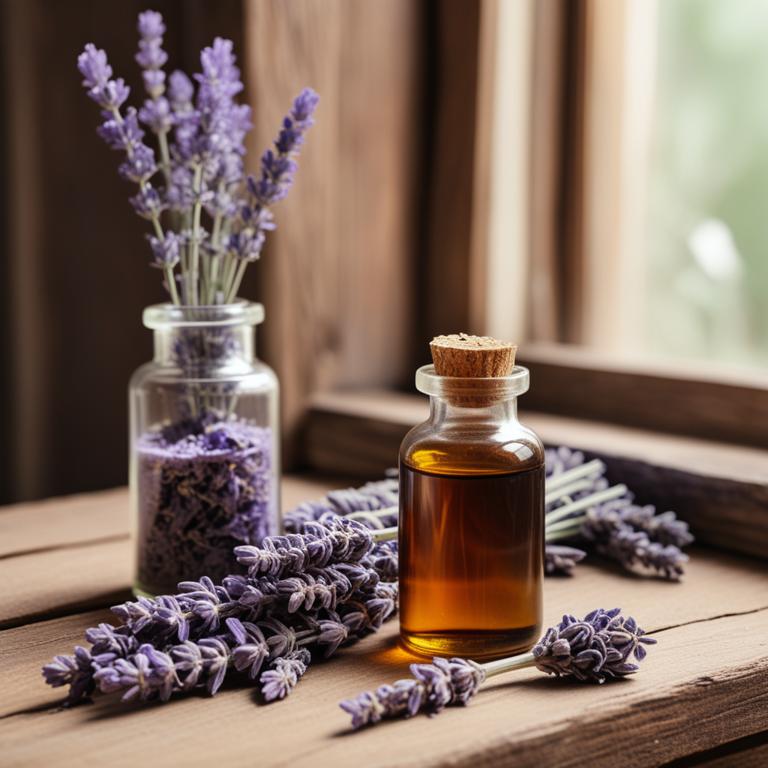
Lavandula angustifolia tinctures contains bioactive constituents like linalool and linalyl acetate, which are known for their antiviral and antimicrobial properties.
These compounds help reduce the severity and duration of cold symptoms by inhibiting the growth of viruses and bacteria that cause respiratory infections. The tincture's expectorant properties also make it easier to cough up mucus and phlegm, relieving congestion and coughing. Additionally, linalool has anti-inflammatory properties, which can help reduce the swelling and discomfort associated with colds.
By addressing multiple aspects of cold symptoms, Lavandula angustifolia tinctures can provide relief from the discomfort and inconvenience of a cold.
- Gather 1 cup of fresh Lavandula angustifolia flowers and 2 cups of 80% vodka.
- Combine the flowers and vodka in a clean glass jar. Stir well.
- Seal the jar and let it sit in a cool, dark place for 2-3 weeks, shaking daily.
- Strain the mixture through a cheesecloth or a coffee filter into another clean glass jar. Discard the solids.
- Store the tincture in the fridge and take 20-30 drops, 3-4 times a day, as needed to relieve cold symptoms.
11. Cinchona officinalis

Cinchona officinalis tinctures contains alkaloids like quinine and quinidine, which have anti-inflammatory and antiseptic properties.
Quinine helps reduce fever and relieve body aches associated with colds. Quinidine, on the other hand, has antiviral properties that inhibit the growth of viruses that cause colds. The tannins in Cinchona officinalis also help reduce congestion and soothe a sore throat.
When taken, these compounds can help alleviate symptoms of colds, such as coughing, sneezing, and runny nose.
- Gather 1 cup of Cinchona officinalis bark, 2 cups of vodka, and a clean glass jar.
- Combine the Cinchona officinalis bark and vodka in the glass jar. Stir well.
- Seal the jar and let it sit in a cool, dark place for 2-3 weeks, shaking the jar every day.
- After 2-3 weeks, strain the mixture through a cheesecloth or a coffee filter into another clean glass jar. Discard the solids.
- Store the Cinchona officinalis tincture in the refrigerator and use 20-30 drops in water or tea as needed to relieve cold symptoms.
FAQ
Can drinking herbal tea prevent colds from forming?
Drinking herbal tea may help prevent colds from forming, but it's not a guarantee.
Some herbal teas, like peppermint and ginger, contain compounds that can help ease congestion and soothe a sore throat.
These teas may also boost your immune system, but it's essential to keep in mind that colds are caused by viruses, so prevention is key.
Is it safe to consume herbal teas for colds every day?
Herbal teas for colds can be safe to consume every day, but moderation is key.
Drinking too much of any herbal tea can lead to interactions with medications or worsen underlying health conditions. It's also possible to develop an intolerance or sensitivity to certain herbs.
Just listen to your body and adjust your consumption accordingly.
How long does it take for herbal teas to show results in colds?
Herbal teas can help with cold symptoms, but it's hard to say exactly how long it takes for them to work.
Some people find relief in a few hours, while others may not feel better until a day or two after drinking the tea.
It really depends on the person and the tea.
What time of day is best to drink herbal tea for colds?
When you're feeling under the weather with a cold, it's best to drink herbal tea in the morning or early afternoon. At this time, your body is most active, and the soothing effects of the tea can help boost your immune system and ease congestion.
Related Articles
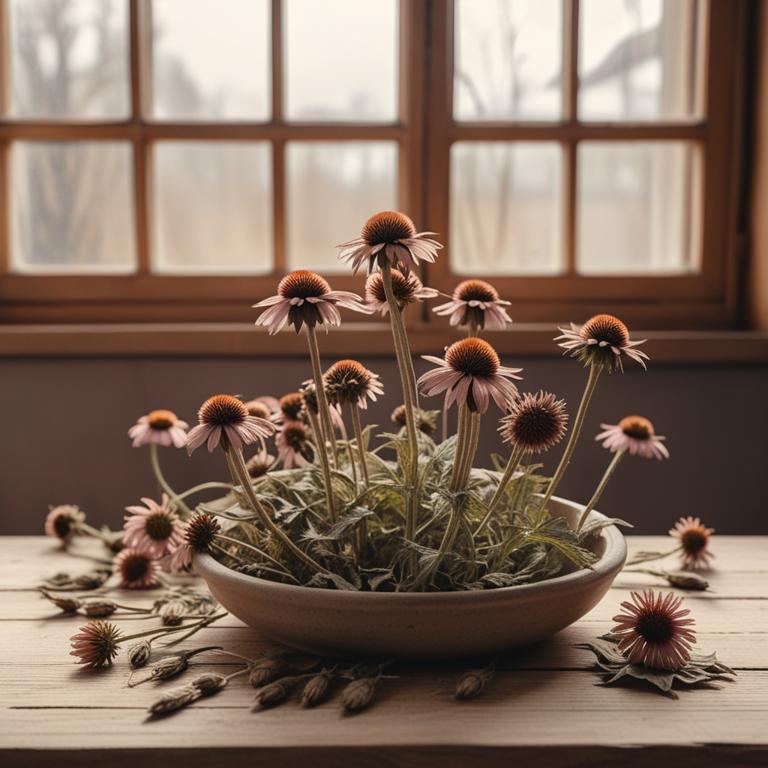
Throat Congestion: Understanding Causes and Medicinal Herbal Solutions
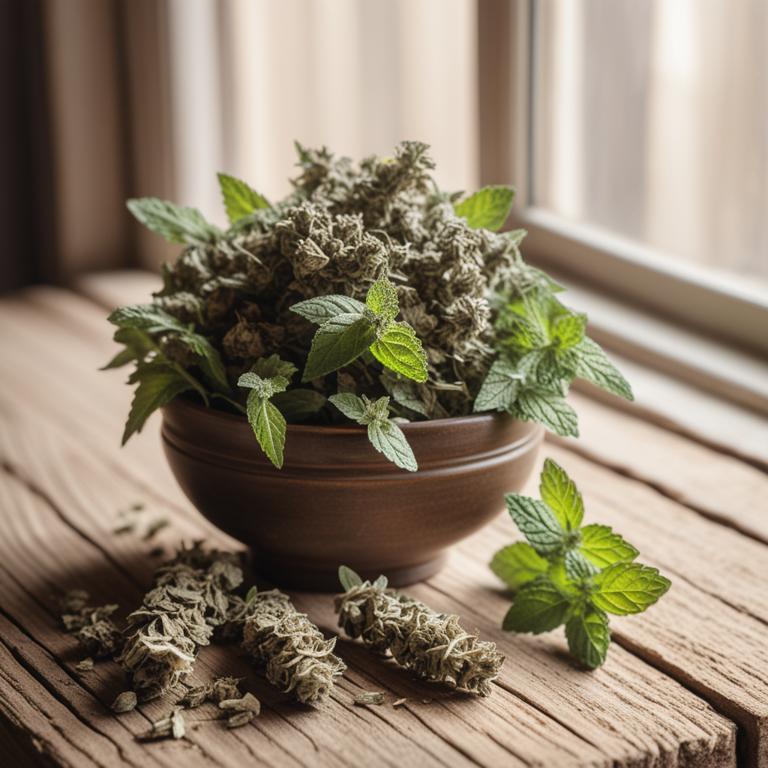
Blocked Nose: Causes, Prevention, and Medicinal Herbs for Relief
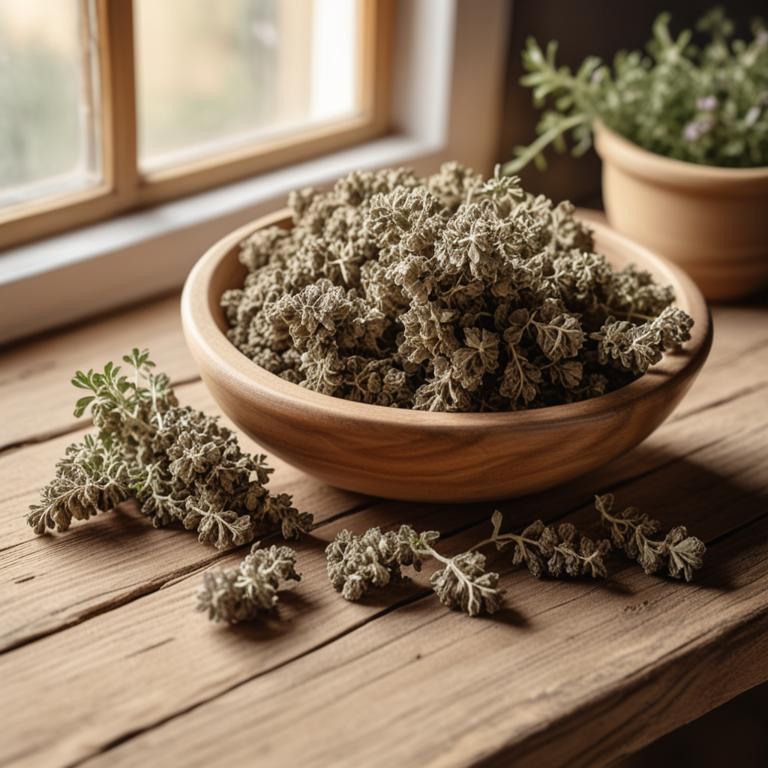
Phlegm: Causes, Herbs, and Medicinal Preparations for Relief
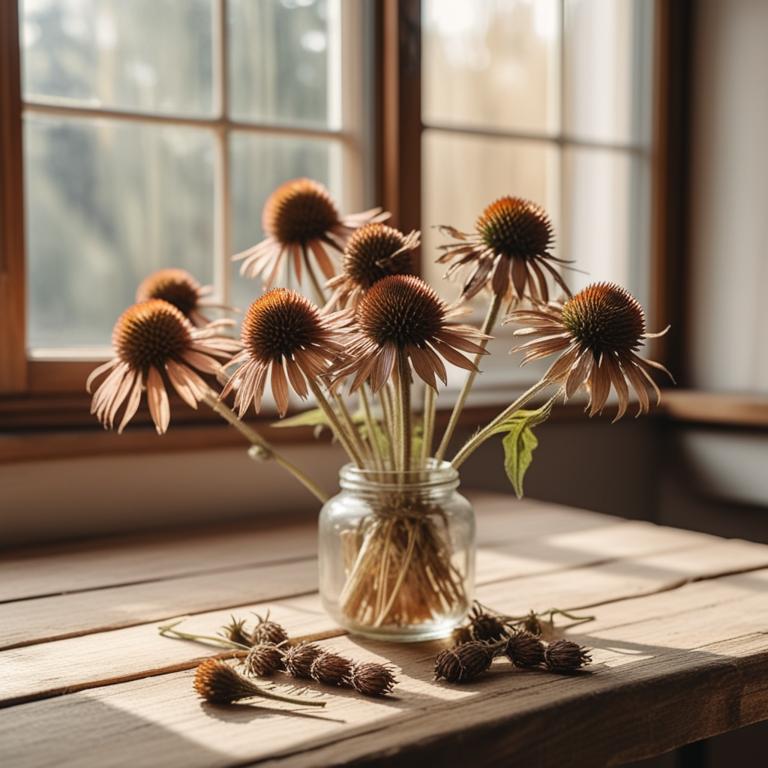
Pertussis: Causes, Symptoms, and Natural Remedies with Medicinal Herbs
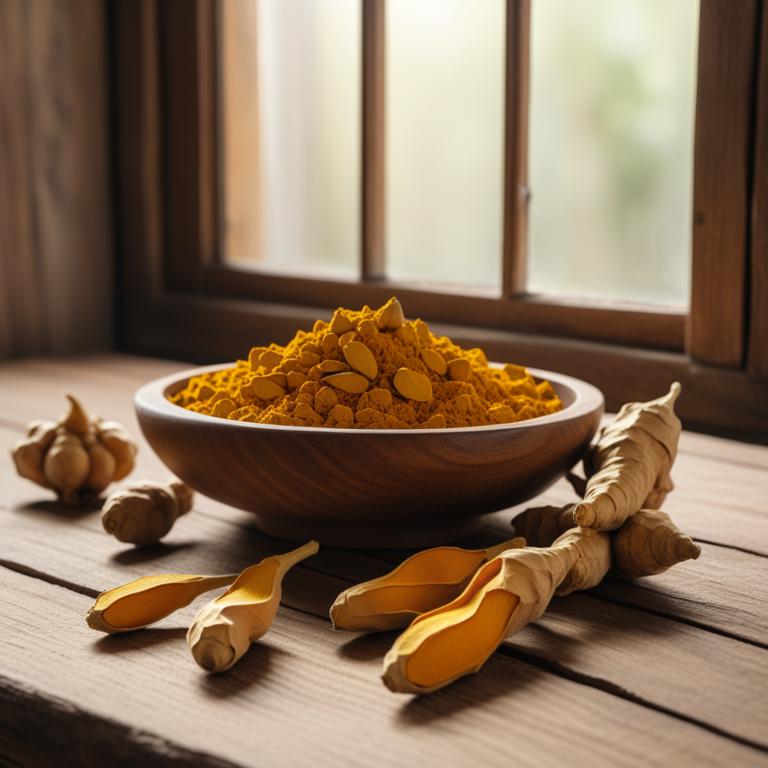
Emphysema Causes, Symptoms, and Herbal Relief Options
